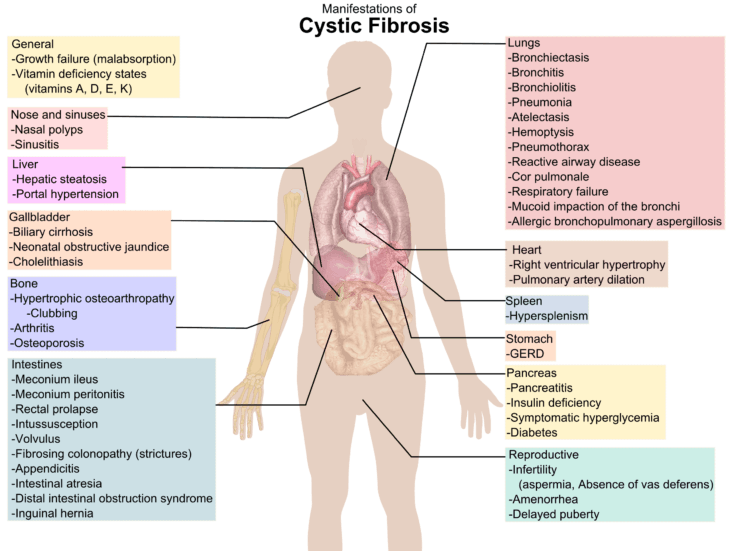Healing the Pituitary Gland with Nutrition and Natural Remedies
The pituitary is about the size of a pea. This gland lies in the sella turcica, known as the “Turkish saddle” at the base of the brain, behind the optic chiasm. The pituitary gland contains two functionally different body parts known as the anterior pituitary and the posterior pituitary. As far as we know, these two, while right next to each other, do not really work together.
At one time, the pituitary gland, also called the hypophysis, was thought to be the “master gland” that controlled all of the other endocrine glands. Now we know that the hypothalamus takes messages from the brain and tells the pituitary which hormones to excrete. For instance, the hypothalamus will secrete growth-hormone-releasing hormone or growth-hormone-inhibiting hormone to tell the anterios pituitary to release or stop releasing growth hormones. The hypothalamus and the pituitary are tightly integrated. Together, they regulate all processes having to do with primitive reactions, such as stress, rage, flight, body temperature, thirst, hunger, sexual activity, and survival in general.
This is an excerpt from the ridiculously long article, Holistic Guide to Healing the Endocrine System and Balancing Our Hormones I believe that it’s easier to heal the body when you understand how the body works, but understanding the endocrine system is big a task. It’s a long article, but I think it’s worth it and I hope you’ll check it out. Also be sure to see How to Heal Your Gut because nothing will work right without a healthy gut.
Anterior Pituitary – Adenohypophysis
The anterior pituitary gland is controlled by negative feedback mechanisms that make up three-quarters of the pituitary gland. Once triggered by the hypothalamus, hormones are released by the anterior pituitary into the bloodstream.
For example, the hypothalamus releases hormones that tell the pituitary to release hormones that stimulate the thyroid to release hormones. These hormones enter the bloodstream to boost metabolism within the body where required. The negative feedback loop we spoke of above is how hormones in the blood communicate to the brain. When the metabolism has been successfully increased to the desired state, hormones in the blood tell the hypothalamus to tell the pituitary to stop stimulating the thyroid gland.
Principal Anterior Pituitary Hormones
Thyroid-Stimulating Hormone
TSH stimulates the thyroid gland to release thyroid hormones.
Follicle-Stimulating Hormone
FSH & LH (luteinizing hormone) are known as gonadotropins because they stimulate the gonads (testicles and ovaries). They are not necessary to sustain life, but these hormones are essential for reproduction.
Prolactin
PL stimulates milk production.
Adrenocorticotropic
ACTH stimulates the release of adrenal cortical hormones by the adrenal glands.
Melanocyte-Stimulating Hormone
MSH is a collective name for a group of peptide hormones produced by the pituitary gland, the hypothalamus, and the skin. This hormone is an anti-inflammatory hormone that gets its name because of its effect on melanocytes, skin cells that contain the black pigment, melanin. Melanocytes are responsible for moles, freckles, and suntans. Melanin helps protect our cells from DNA damage from sunlight.
Studies have recently shown that MSH can also suppress appetite. In all likelihood, MSH is also responsible for a range of other processes in the body.
Related: Best Supplements To Kill Candida and Everything Else You Ever Wanted To Know About Fungal Infections
Human Growth Hormone
HGH (somatotropin) stimulates growth of the body and helps regulate metabolic processes. People feel younger and the body heals much faster when there is enough (or excess) growth hormone. The most important function of HGH is to tell the liver to produce IGF-1, or insulin-like growth factor 1. IGF-1 is considered by many to be the key anti-aging hormone. Together these two hormones influence every system in your body.
Increase Your Growth Hormones Naturally
If you get a prescription, injections given twice a day by a doctor can increase your IGF-1 hormone production by 20 to 40 percent. Professional athletes and movie stars swear by growth hormone injections. They may be the untold secret to many people’s success, but there are health problems with injecting hormones into the body. One of the many problems is that the pituitary can lose its ability to produce its own GH.
Some take pills and supplements that contain growth hormones, which are available over the counter like other supplements. Users should do their due diligence before taking any product containing human growth hormones.
There are also many supplements designed to increase the body’s growth hormone production (Growth Hormone Production Nutrition). When someone is matched with the right supplements, the right formula can increase IGF-1 levels by 20 percent or more. A good alternative to HGH injections, these supplements are amino acid-based precursor formulas that contain ingredients such as glutamine, tyrosine, GABA, arginine, and lysine.
Working out can dramatically increase growth hormone prevalence. A thirty-minute aerobic session can increase IGF-1 levels by more than 100%, and a serious weight training session can increase levels by 400 to 800%. On that note, everyone should be doing squats for a multitude of reasons, including but not limited to growth hormone production!
HGH Protocol
Squats have a myriad of health benefits including an increase in growth hormone production. It’s one of the most important movements we can do for our health. Try with just a few bodyweight squats if you’re out of shape, and work your way up to being able to do 100 squats at one time without getting sore. If you can’t do squats, try lying on the floor and then standing up, then lying back down to repeat, alternating legs each time. If you’re really serious about kicking up your growth hormone production, try sprints with high-intensity-interval training and low rep Olympic barbell squats with deadlifts, rows, pull-ups, and bench presses. The more muscles involved in the action and the heavier the load, the more HGH is released.
Related: How to Detoxify and Heal the Lymphatic System
Specific nutrition is known to increase growth hormone production under the right circumstances; these supplements are much more powerful when combined with the right exercise program.
- L-arginine is an essential amino acid that can increase the release of HGH, but do not take with sugars. L-arginine should be taken only with low glycemic nutrition.
- Glutamine is your body’s most abundant amino acid. Studies have shown that even modest amounts can significantly increase HGH levels.
- Glycine plays a critical role in initiating normal patterns of REM sleep and has shown some promise in increasing HGH. We’re not sure if the high-quality sleep is what’s improving the hormone levels, or if there are also other factors when supplementing, but proper sleep is a critical factor in the body’s ability to regulate the circadian release of HGH.
Adequate sleep is a must! The highest concentration of HGH activity occurs when we are sleeping.
Growth hormone and testosterone production peak during sleep. You can actually get people to test pathologically low for growth hormone by waking them repeatedly during the night. I always tell people that if you want to maximize your growth hormone, get a good night’s sleep.” – University of Texas Southwestern Medical Center in Dallas
Avoid high glycemic load foods, which is good advice for most anyone who’s not healthy or wants to stay healthy. Insulin inhibits HGH secretion. High glycemic foods (which are generally processed foods with refined sugars) wreak havoc with our insulin levels.
Hawthorn berries, horny goat weed, and maca are also known to aid the body with HGH production.
Anterior Pituitary Nutrition
Conditions such as acromegaly, Cushing’s syndrome, and prolactinoma occur when the pituitary gland produces too much of one or more of its hormones.
Adult growth hormone deficiency, diabetes insipidus, hypopituitarism, hypothyroidism, and hypogonadism may result from the pituitary gland producing too little of one or more of its hormones. There are many more diseases that stem from a dysfunctional pituitary gland, like acromegaly, which gave André the Giant his stature and early death.
As previously mentioned, high glycemic foods and refined foods should be avoided for healthy pituitary function, but this is true for all glandular function, and for the entire body, for that matter. It should be noted that fruits with high glycemic loads have other benefits that make moderate consumption healthful, provided the person does not have an illness that requires limited natural sugars. Adaptogens like ashwagandha, eleuthero, holy basil, maca, Panax ginseng, Rhodiola rosea, and schisandra, as well as glandulars (desiccated glands), are generally used for naturopathic healing of the pituitary. Check out Shillington’s Brain Tonic and Desiccated Pituitary.
Considerable recent research has shown that the pituitary is extremely sensitive to diet. (Someday science will recognize that this is true for every cell in the body.) If you don’t assimilate enough protein, your pituitary can’t produce enough pituitary hormones (which are made up of amino acids). The pituitary is also known to need manganese, vitamin E, vitamin A, vitamin D, and B vitamins for proper healthy function.
Posterior Pituitary Gland – Neurohypophysis
The posterior pituitary gland is slightly smaller and lighter in color than the other half of the pituitary, and it is not technically a gland, though it is a vital part of the endocrine system (and everyone still calls it a gland). This “gland” does not synthesize hormones. Instead the posterior pituitary stores and secretes two hormones, oxytocin and vasopressin, which are actually produced in the hypothalamus (master gland) and transported to the pituitary.
Diabetes insipidus is the only clinical disorder that is generally conceded by the medical community to be of neurohypophyseal origin, but more and more evidence suggests that the posterior pituitary may have functions now scarcely appreciated. Treatment for the posterior pituitary gland is lumped in with treatment for the entire endocrine system, and the nutrition recommended is the same as mentioned above for the anterior pituitary gland.
Oxytocin
OXT is a powerful hormone with a lot of responsibilities. During childbirth, this hormone increases the strength of uterine contractions and stimulates the ejection of milk after delivery. Incidentally, Pitocin is a synthetic form of oxytocin, used to induce labor.
Oxytocin is known as the “love hormone,” or the “bonding hormone,” because it’s said to foster maternal instincts and sexual pleasure during and after intercourse. It’s not just a sex hormone, oxytocin levels in the body increase when we hug or kiss a loved one like a spouse, parent, or child.
Oxytocin plays a role in healing as well:
As mice age, the amount of oxytocin in their blood decreases. But what does that mean for their health? Researchers injected oxytocin under the skin of elderly mice with damaged muscles and discovered the muscles healed much faster than those of mice left untreated.” – Mental Floss
We’re just beginning to find out that oxytocin radically affects many aspects of our lives. This hormone inhibits the brain’s fear center, has been shown to influence how men remember their mother’s affection toward them as children (likely true for women, too), makes it easier for us to lie, makes it easier for us to trust, has been shown to make men more loyal to their spouses, is released when we feel safe and unobserved (causing shyness and a desire for privacy), increases the pain threshold, relieves stress, helps us relax, alleviates depression, increases generosity, and generally makes us feel good.
While oxytocin is partly responsible for a man’s courage to ask a woman out, this dynamic also helps give men the loyalty to stay with their loved ones. Dads who got a dose of an oxytocin nasal spray were shown to play more closely with their infants than dads who did not get the hormone spray. Another study found that men in relationships, when given a burst of oxytocin, stay farther away from an attractive woman.
It stands to reason that oxytocin plays a key role (though certainly not the only one) in women being able to handle the strain and pain of childbirth.
Antidiuretic Hormone
ADH: (aka vasopressin, argipressin) is responsible for water concentration and blood vessel constriction. While precise control of the body’s water concentration is a function of several hormones acting on both the kidneys and vascular system, ADH is a key player in this process. Blood vessels increase re-absorption of fluids by the kidneys, which decrease urine production to improve hydration. The effect raises blood volume and blood pressure.
Not-so-fun fact: alcohol inhibits this hormone, producing the profuse urination we experience from a drinking binge, which can lead to severe dehydration.
Diet is, as always, paramount. Check out Detox Cheap and Easy Without Fasting – Recipes Included. And again, this is an excerpt from the ridiculously long article, Holistic Guide to Healing the Endocrine System and Balancing Our Hormones. Also, check out How To Heal Your Gut.
Supplement Stack For the Pituitary Gland
- Shillington’s Brain Tonic
- Stress B-Complex – Thorne Research
- Stress B-Complex – Thorne Research
- Pituitary 90mg – Progressive Labs
- Ashwagandha Liqid Phyto-Caps – Gaia Herbs
- Eleuthero Root Capsules – Gaia Herbs
- Ocimum spp. – Holy Basil – Wise Woman Herbals











